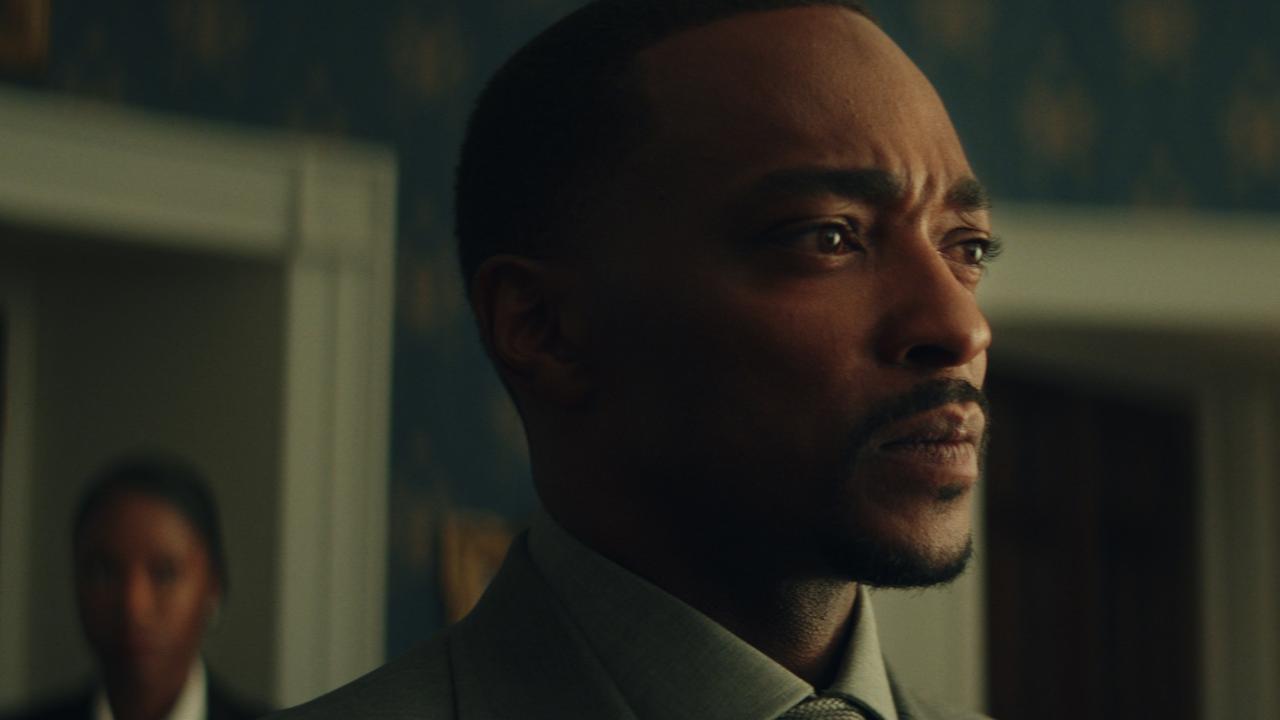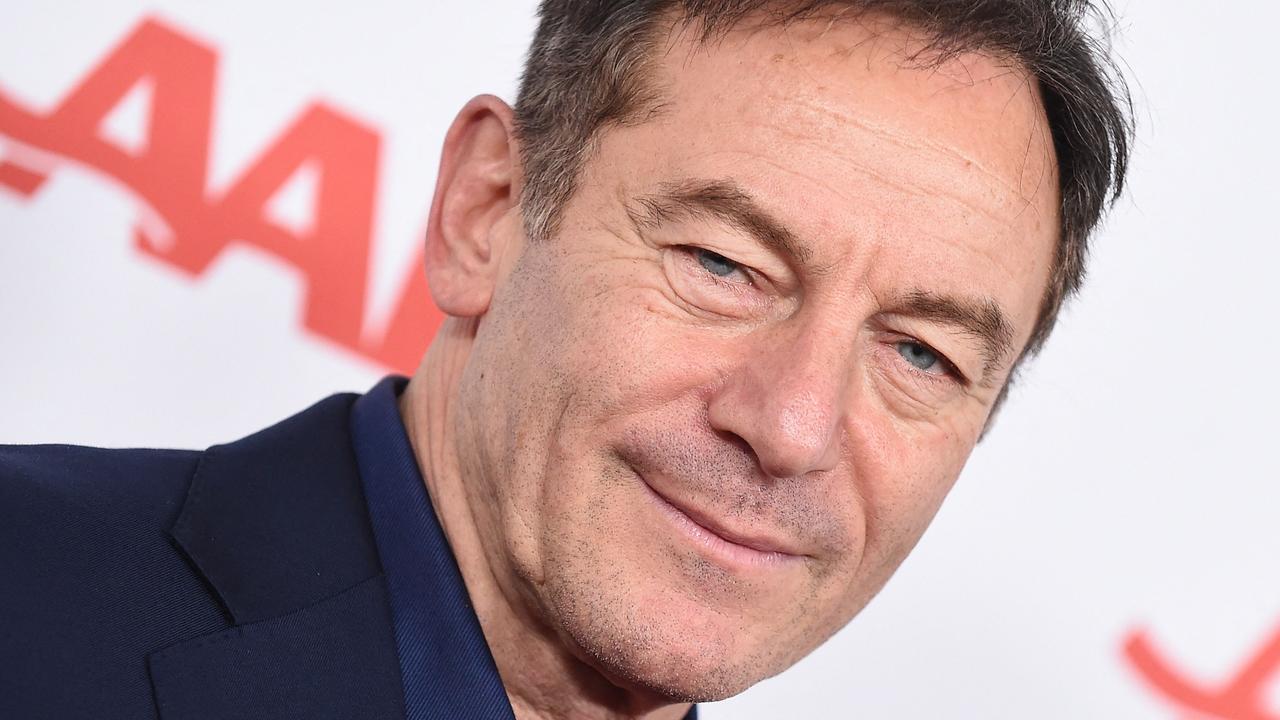TasWeekend: Think there’s nothing in the north? Think again
There is a cultural revolution in action in northern Tasmania.
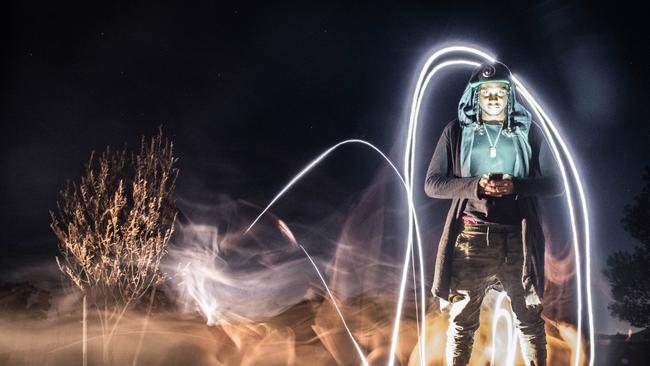
Entertainment
Don't miss out on the headlines from Entertainment. Followed categories will be added to My News.
FOR as long as I can remember, people in Launceston have complained about Hobart “getting all the good stuff”. When I was a Launcestonian teenager I’m sure I was guilty of saying it myself, as if it was a primary school PE class and the balls weren’t being shared around fairly.
And there is some truth in it. Being the capital city and the largest population centre, Hobart tends to draw the big events and acts. The same is true of every capital city in every other state. To an extent, it’s just a numbers game.
Tasmania’s perpetual fear of being left out probably feeds into this regional anxiety and rivalry as well.
But the state’s North certainly isn’t left out, not by any means. In recent years there has been a considerable upsurge in cultural activity in the northern region and the stubborn belief that all the best events and attractions are south of Oatlands is starting to look patently false.
While the South might have traditionally been the cultural and demographic hub of the state, the northern half of Tasmania has learnt to make its own fun, thanks in large part to the efforts of entrepreneurial individuals who took it upon themselves to make their big ideas happen.
Big music festivals like Party in the Paddock and Panama, held in the North, have become nationally renowned and now draw big international acts. The Mona Foma festival is being held in Launceston this summer, a promising sign of confidence in the region from the undisputed kings of festival planning and promotion at Mona. And with the massive expansion of the University of Tasmania’s Launceston campus, the ensuing growth in the student population will create increased demand for suitable cultural events. And that’s just to name a few.
There have always been a few big fixtures in the North, evergreen events and attractions that have become cemented in and Hobartians will travel for them with relatively little complaint.
Agfest, for example, is the state’s biggest field day, drawing bigger crowds than the Hobart or Launceston Shows, with people flocking to its Carrick home outside of Launceston by their tens of thousands every year.
The Tasmanian Craft Fair at Deloraine is another stoic performer, a massive showcase of arts and crafts that floods the small Meander Valley town with visitors from around Tasmania and interstate every year.
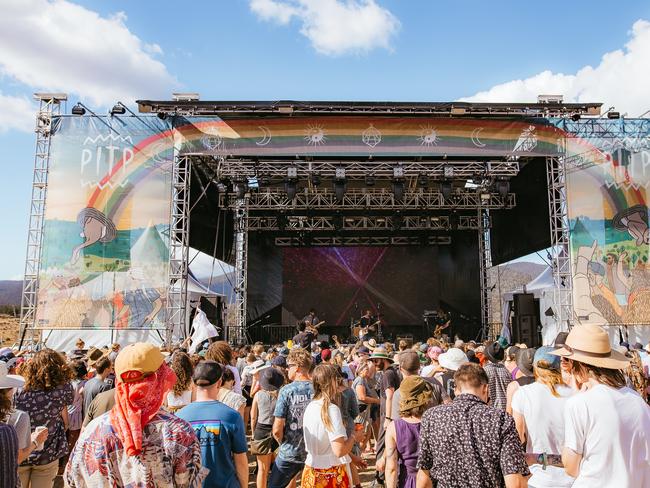
And Festivale, Launceston’s annual food and music festival, continues to draw big crowds every year, even with its entry fees of between $20-$30: the mere mention of charging gold coin entry for Hobart’s Taste Festival tends to lead to outraged mobs outside Town Hall.
But the North’s recent reinvention probably got its kickstart in 2006 when the State Government signed its first sponsorship deal with the Hawthorn Football Club to play games in Launceston at what was then Aurora Stadium, now UTAS Stadium.
Despite the initial outrage from Hobart, Launceston has become accepted as the defacto home of the Hawks, proving the northern city is capable of hosting such an event, has the capacity to accommodate the interstate visitors, and even proves people from Hobart are prepared to travel up for a game.
The success of the AFL deal was a huge confidence boost for the North. And it was the opening of a quirky museum in Hobart in 2011, that may have provided the final inspiration to prospective event organisers in the North to just get on and do it.
The dazzling success of David Walsh’s Museum of Old and New Art proved something very important in the eyes of Tasmanians who have a tendency to say “the government should do something about this” in response to many problems.
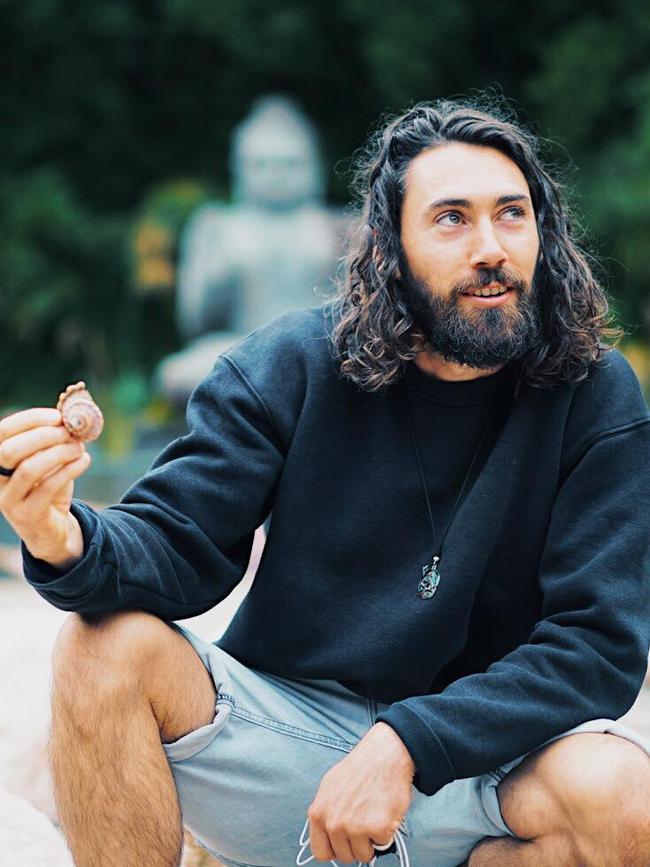
Walsh had a vision. He wanted to create a museum and art gallery to showcase the sort of stuff he liked. So he just built it. It helps to have the fortune that Walsh had, of course, but the result is the same. He didn’t wait for government think-tanks or council committees to come up with a plan and workshop it to death. He just did it. And people love it.
Jesse Higgs, 28, of Burns Creek east of Launceston, is a prime example of someone who had an idea for an event and just made it happen. A founder of the Party in the Paddock music festival, Higgs started out literally organising an overblown party in his backyard featuring local bands, and grew it into what is now a nationally renowned music festival, attracting international artists and with a reputation on par with some of the biggest festivals in the country.
The festival grew so large so quickly that Higgs had to find a bigger paddock in which to host it. The Party in the Paddock, held in February at White Hills, is now a live music fixture in Australia, attracting interstate and international music lovers, not just Tasmanians.
A musician, Higgs says he was frustrated with the live music scene in Launceston, travelling with his band up and down the east coast of Australia chasing gigs when there were not enough in his home town. “I felt there was no platform for any local bands to graduate on, you know, to take that next step from pub gig to music festival,” he says. “And for bands who wanted to come down here, or for other emerging artists, there was no touring route for them either.”
When Higgs’s eureka moment hit, the solution was simple: “Why not start one in my own backyard?
“I couldn’t see a reason why not, until the council told me I couldn't just have a party of 1000 people in my back paddock, it had to be a proper registered festival. So I said ‘OK, let’s formalise it then’. They said I’d never get the paperwork done in time, but I sat there for days, filling it all out and I got it done.
“In 2013 Party in the Paddock became a legit festival and has been nearly doubling its attendance every year.”
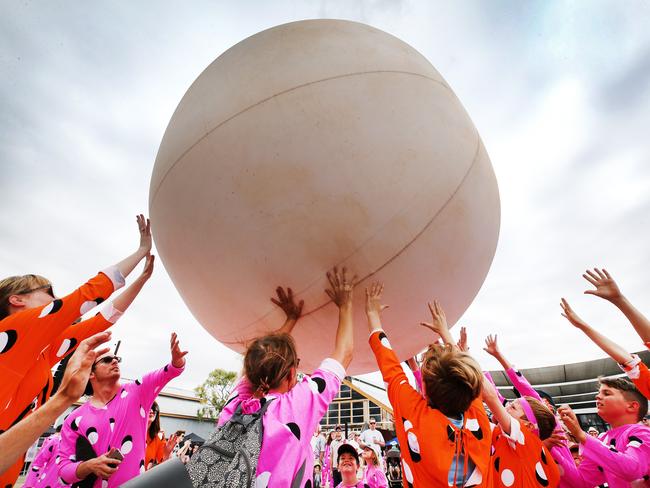
The last festival, headlined by Grouplove from the US and Australian band Gang Of Youths, drew a crowd of 7500 people, which is where the capacity of the festival is capped for now. But despite the event’s size and rapid growth, Higgs says they have kept its boutique feel and laid-back friendly ethos, trying to maintain the sense of “just coming to a big party in someone’s backyard” that has made it so unique.
But it’s one hell of a popular party. The upcoming festival will be headlined by UK artist Lily Allen. “I know right?” Higgs laughs. “Lily Allen, it’s just ridiculous. I was talking to our booking agent — we got sick of doing all the bookings ourselves so we hired an agent — and he says to me, ‘it looks like Lily Allen might want to play there this year’.
“I said ‘what, the actual Lily Allen? Seriously?’ And he says ‘yeah, should we put an offer in to book her?’ And I said ‘are you kidding me? Yes! Do it!’.”
Festival and event production is now Higgs’s full-time job along with a handful of others under the business name Vibestown Productions. He says the festival is yet to make a profit but it pays a wage to the business’s staff and that is good enough.
“I’m doing something I love and so is everyone else who worked on this festival, and that’s the important thing. To make something like this happen, for other people to enjoy it, you need someone who is passionate about it. I’m an avid festivalgoer and I wanted to create something that I’d like to go to — and apparently lots of other people want to go to it as well.
“About a quarter of the audience are from outside of Tasmania now, and a proportion of those are from overseas, which is incredible. And according to a survey that was done, the concertgoers who come here from interstate or overseas stay in Tasmania for an average of five days, which means they are also doing other things and visiting other places while they’re here.
“I would like to see Party in the Paddock outlive my involvement with it and continue on long into the future. It is getting to that place now where it is sturdy and stable and I would love it to be a Launceston staple, just like Falls Festival is in the South.”
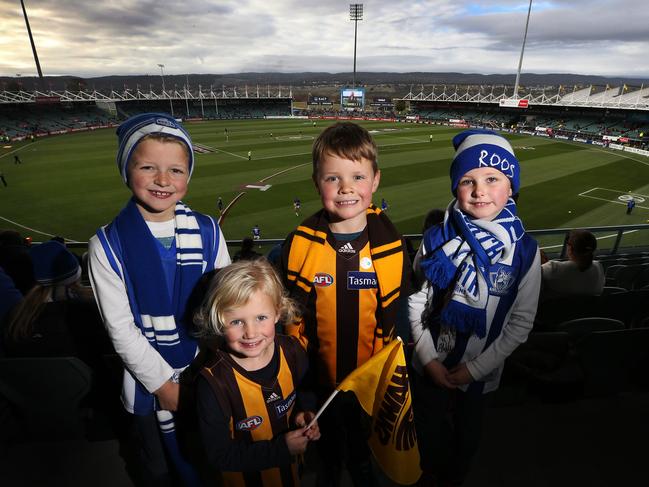
Party in the Paddock is followed in March by the Panama festival at Lone Star Valley in the North East, and with the inclusion of other concerts like A Day on the Green, which is regularly hosted at Josef Chromy Vineyard on the outskirts of Launceston, and the Forth Valley Blues Festival on the North-West Coast, it is fair to say the North is well supplied with top-tier live music festivals.
And we Tasmanians do love our open-air music festivals. Long before the Falls Festival arrived and sent people a bit crazy, thousands of people used to cram into the Cataract Gorge in Launceston every year for the Basin Concert. Possibly the most perfect location for an outdoor music festival anywhere in Australia, this gig would feature mainly local acts and the occasional national headliner and often entry was simply by donation to the charity du jour.
Sadly, the tradition began to dwindle during the 1990s and eventually vanished. It was revived briefly a few years ago but has since vanished again, considered too expensive to run these days. But with this style of festival now very much in demand, maybe it is only a matter of time before a dedicated local decides to resurrect this iconic concert once again.
Not everything is about music and football, though. Launceston also hosts the Breath of Fresh Air film festival each year, and the Tamar Valley Writers Festival draws huge crowds of literature lovers every two years.
Noting Launceston’s lack of an independent cinema, a group of enterprising friends teamed up to refurbish and re-open the art deco Star Theatre in Invermay last year. Launceston’s answer to Hobart’s famous State Cinema, the Star Theatre shows mainstream and independent films, as well as special event screenings, classic movie nights, and is fully licensed with a bar and cafe, catering to functions and festivals as well.
In Devonport the newly opened multi-use paranaple centre promises to be a hub for all kinds of cultural activities, combining the Devonport Entertainment Centre, Devonport Art Gallery, cafe and library, along with civic services like Service Tasmania and Devonport City Council offices.
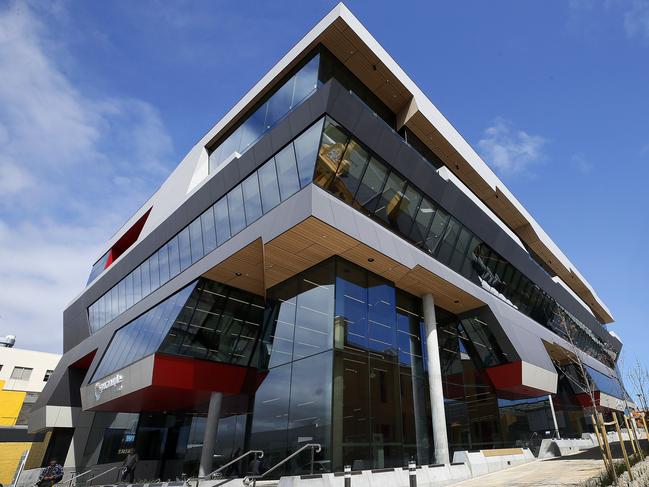
Part of Devonport’s Living City project, the $71.1 million paranaple centre (styled all in lower case in keeping with the conventions of Tasmanian Aboriginal language, paranaple being the indigenous name for the Mersey River running through the city) is the first stage in an ongoing campaign to create thriving new public precincts in Devonport.
And having such precincts is especially vital in a place like Devonport, being the entry point to the state for anyone arriving on the Spirit of Tasmania. A large proportion of tourists to Tasmania pass through Devonport and the trick is to give them a reason to stop there for a while before travelling on.
Backing on to the paranaple centre is Providore Place, a food pavilion and public space designed to showcase everything the region has to offer in terms of food and drink. And the star attraction in this pavilion is new restaurant CharlotteJack, owned and operated by MasterChef finalist and host of SBS Food Network series Food Lab, Ben Milbourne.
Both Milbourne and wife Sally grew up in the North-West and later worked as teachers in the region, so they have a deep connection to the North-West Coast and a desire to see it realise its full potential, especially as they now raise their children there.
Milbourne sees his restaurant, named after his kids, as both a business enterprise and a way of giving back to his local community.
“The idea was to build something the locals can feel proud of and feel ownership of, and also something that people will want to come and experience,” Milbourne says. “And Devonport is such a good spot for that, with the Spirit docking there and the airport nearby, a lot of tourism traffic comes through the area.”
The restaurant, decorated in a Tasmanian Gothic theme, is geared towards casual dining with a menu of only a few items carefully curated by Milbourne and featuring local seasonal produce, changing about every six weeks to reflect the changing seasons and availability of produce.
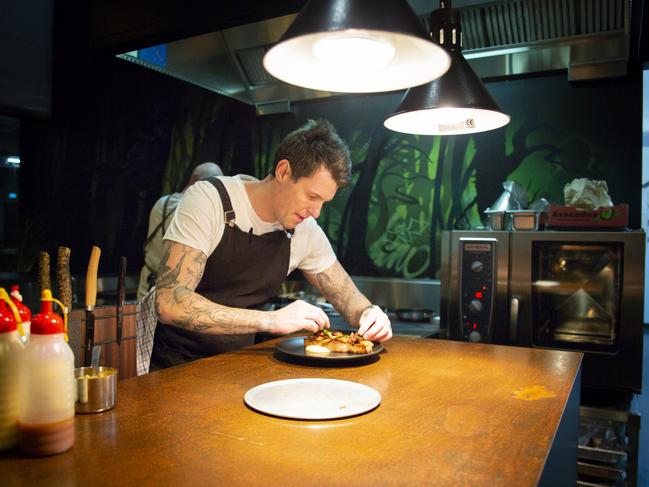
Additionally, the restaurant has a back wall made of glass, allowing diners and visitors to watch episodes of his TV show being filmed on the premises in a special studio kitchen, something Milbourne hopes will help make the restaurant a tourist attraction as well as an eatery.
“Filming the show there gives us a bit of a national brand, people who watch the show will be aware of where it is being filmed and it is possible to be a part of it, you can watch it being filmed,” he says. “I want the restaurant to be a really integrated part of the community, I want people to give feedback, talk about what sort of things they want to see on the menu, and be proud of supporting the place. I want them to feel like it is theirs. “Places like Franklin in Hobart and the Agrarian [Kitchen] Eatery at New Norfolk do that really well, in that people in their communities take great pride in these restaurants, they see them as being theirs and I want CharlotteJack to be like that.”
Milbourne says that people in Devonport have long complained about people simply passing through the city on their way to somewhere else in Tasmania, never stopping. But the question had to be asked: what is there to stop for? He says the Devonport City Council’s Living City project was the perfect answer to this question, creating spaces that will appeal to locals as well as serving as an enticement to visitors to come and explore the place.
“The council made this really tough decision to back a project that was looking a decade into the future. We’re not looking at instant gratification and short-term benefits here, but something that will pay off more and more in years to come, and that’s how it should be.”
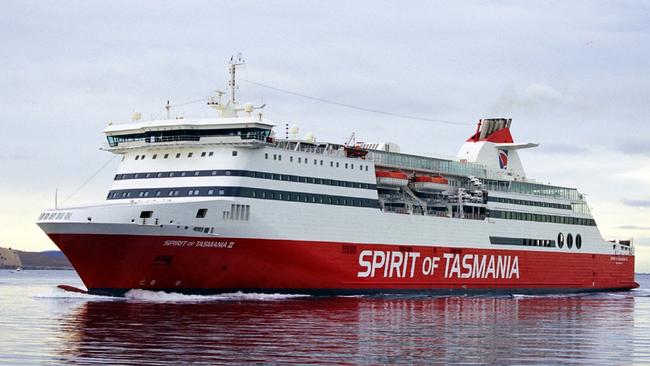
Milbourne says the old Hobart-centric attitudes seem to be dying out, especially among younger Tasmanians. There was a time when “Tasmania” simply equalled “Hobart”, but increasingly we seem to be looking at our state as a whole, rather than just one city. People from the North have always accepted the need to head to Hobart for certain big events or to study, but the notable shift in recent years is that Hobartians are starting to venture to the North, in order to chase the events and attractions outside of Hobart.
“The younger generation haven’t grown up with that ‘there’s nothing to do here’ attitude, I don’t think. My generation certainly did, though. We believed that to do anything interesting you had no option but to go south.
“When I grew up and moved to Brisbane I was embarrassed to tell people I was from North-West Tasmania. They looked at you differently. But that’s different now, people are proud to say they’re from here and we need to keep growing that pride. The ‘Monafication’ that started 10 years ago has spread statewide, it gave us something unique and world renowned and that pride was just what we needed.
“Walshy at Mona absolutely started that, he showed it could be done. Lots of people have these pipedreams — it’s also nice to have a big piggy bank to raid, of course — but what he did was to start a successful venture, prove that it could work, and people started modelling it. It started a domino effect: more visitors started to come, which gave other private investors faith that they could do the same, and when one person does something, others follow.”
Milbourne believes the next big wave in Tasmanian tourism will be growth in the more regional areas and the key to maintaining the current trend is to keep building the necessary infrastructure — not just hotels, but attractive precincts, great experiences and reasons for people to stay more than a day. And encouraging people to create new events, festivals and other attractions is every bit as vital.
“Hobart is probably at capacity now, I think, but things are happening right now to help it grow, which is good. Hobart has a fantastic reputation, it has so many great attractions and festivals and hordes of people flock there in the peak of summer.
“The next step is to get the word out that there is more out there than just Hobart. The best parts of Tasmania are outside of those metro areas, I think. I love Hobart to death, it’s a beautiful place, but there is so much more to Tassie than just one city. You can’t do Tassie in a long weekend and we need to make sure our visitors know that!”
Of course, the key to success for any event or attraction is attendance. No venture will survive if people fail to patronise it. If you live in northern Tasmania, you have no excuse to complain that there is nothing to do, but if you want those events to continue, people need to go to them.
Relocation of the internationally renowned Mona Foma festival to Launceston this coming January is a classic example. The last MoFo, held in Hobart, included an abbreviated program in Launceston to test the waters and the turnout for the party at the Inveresk Tramsheds site was phenomenal. Good enough, in fact, to convince the organisers to shift the entire festival north for 2019.
If you want to see it come back to Launceston again, you know what you have to do … turn up.

